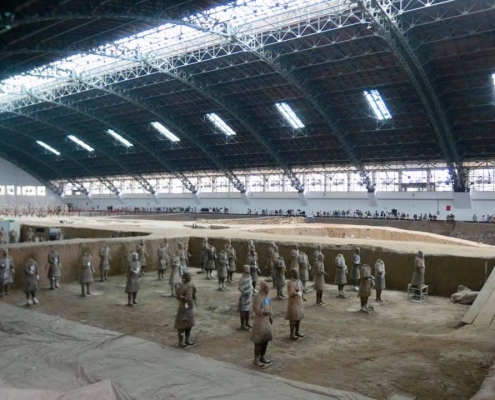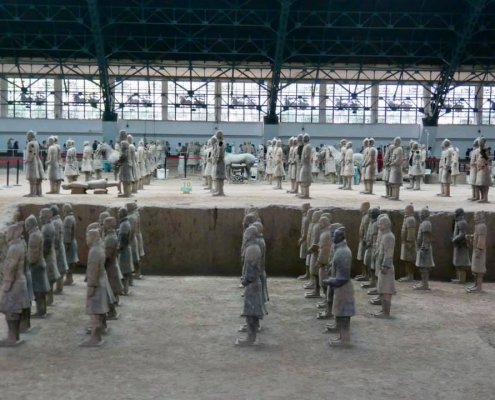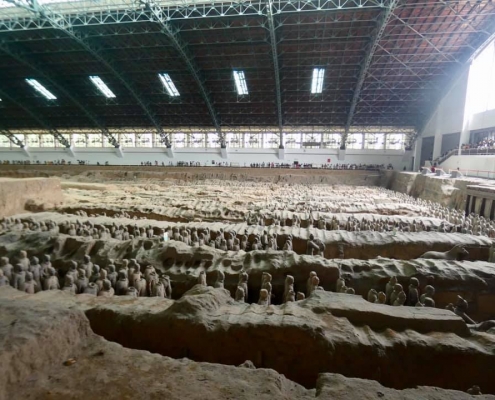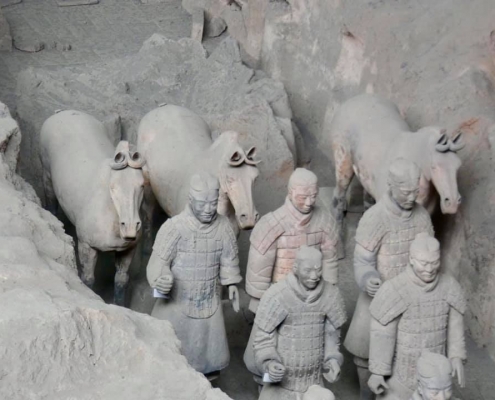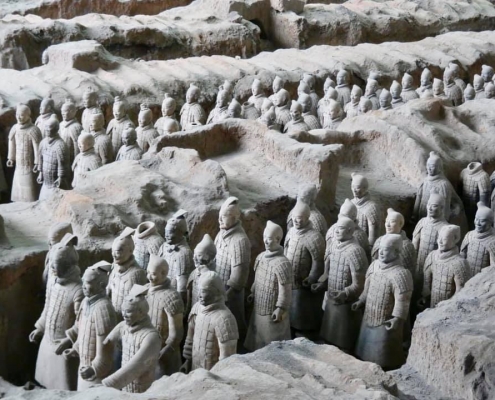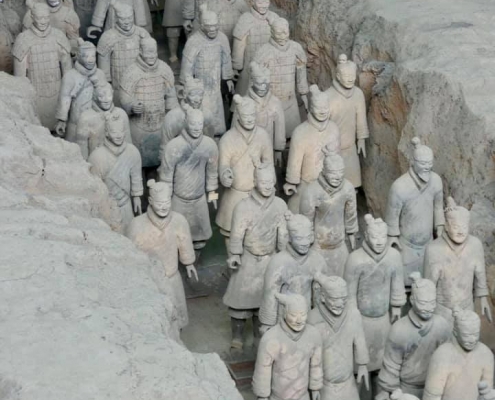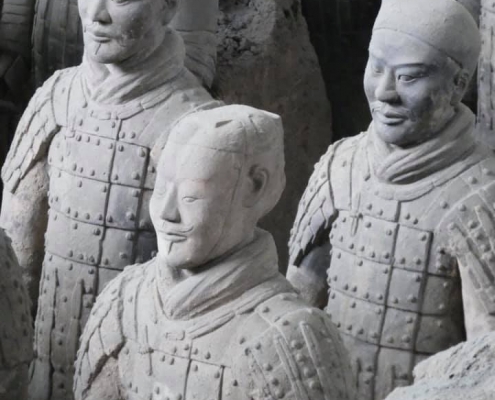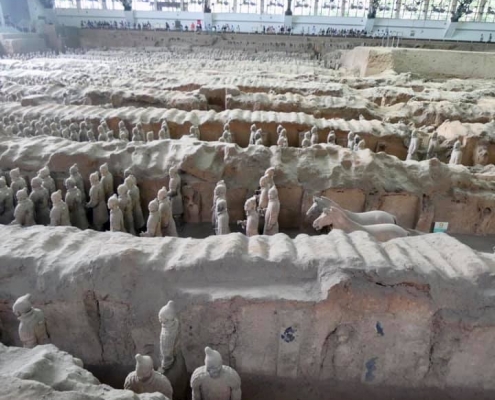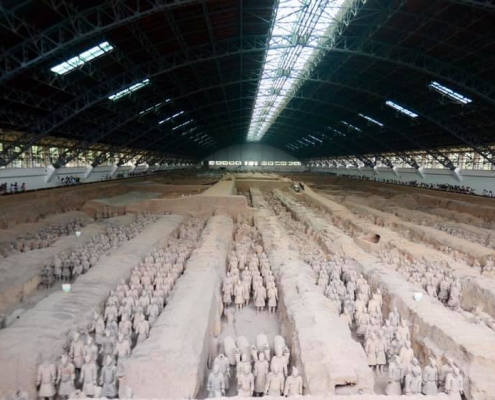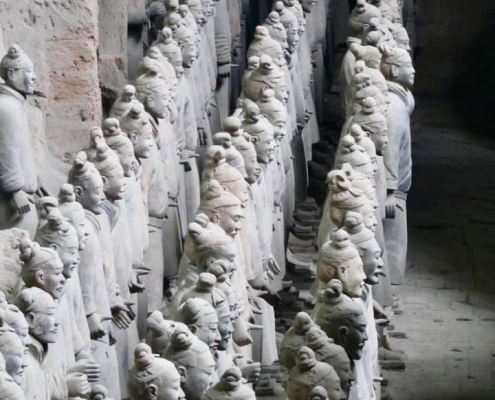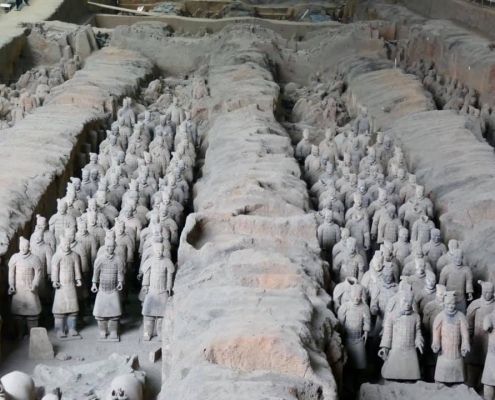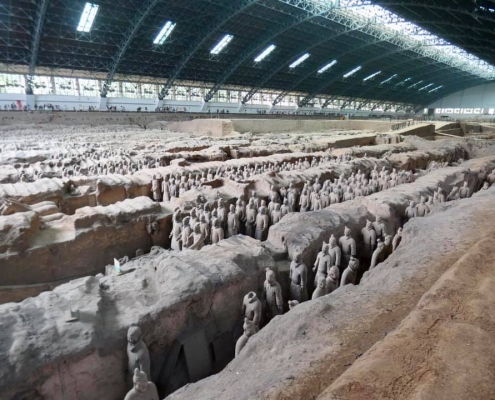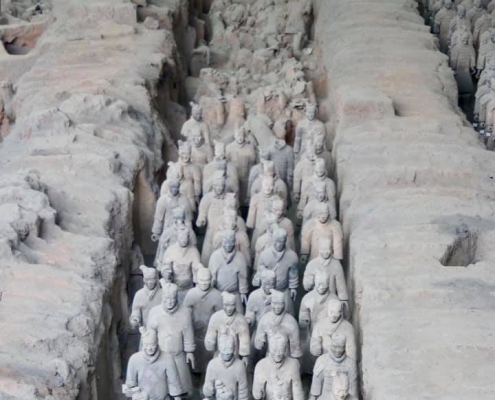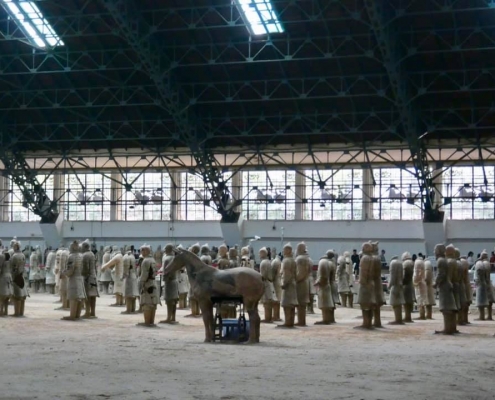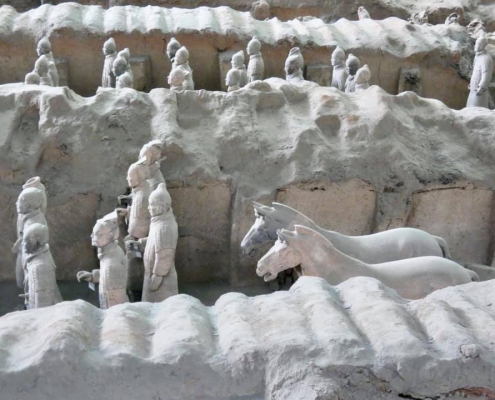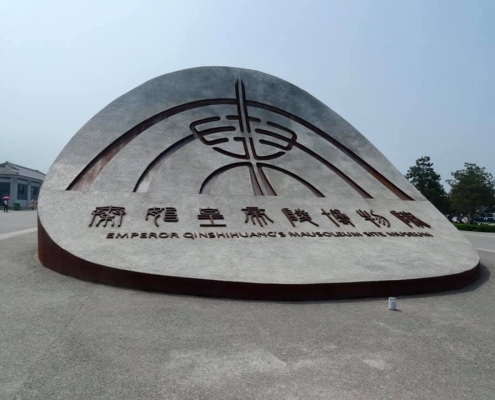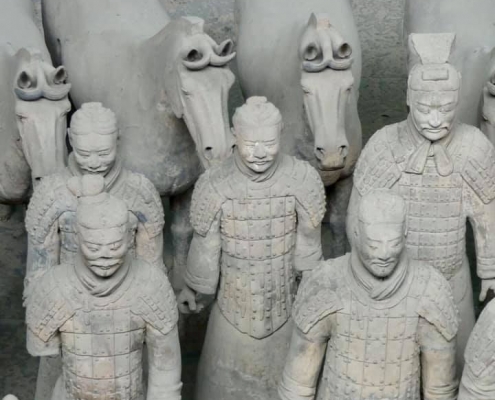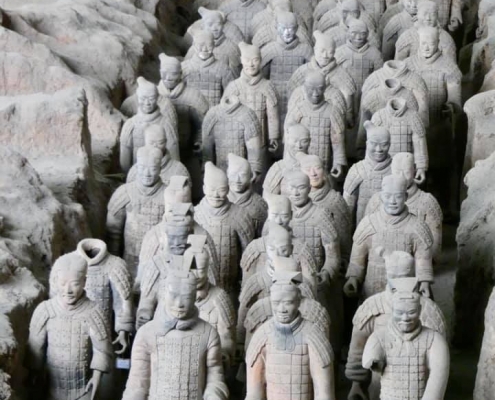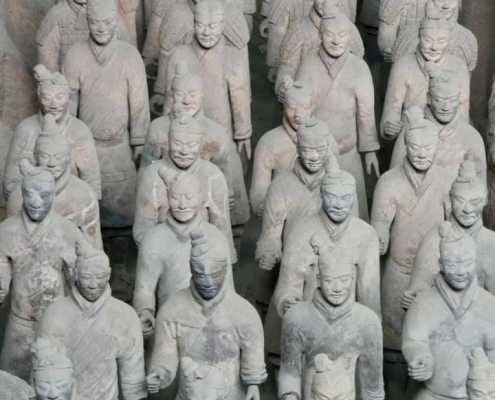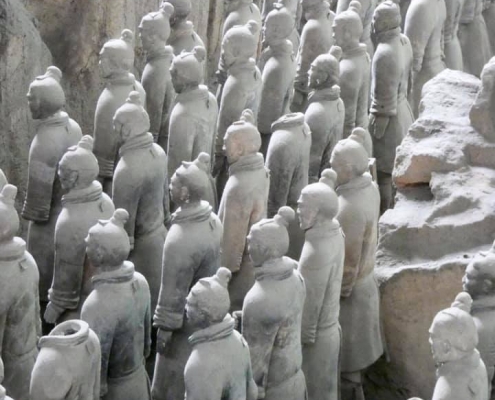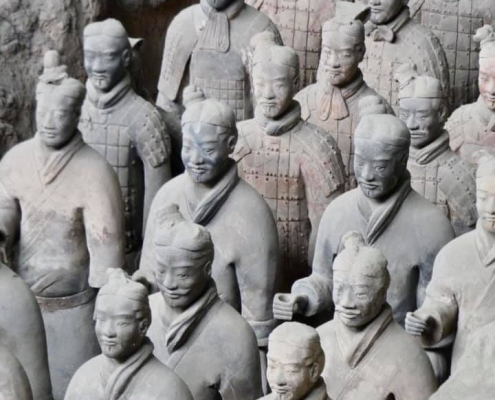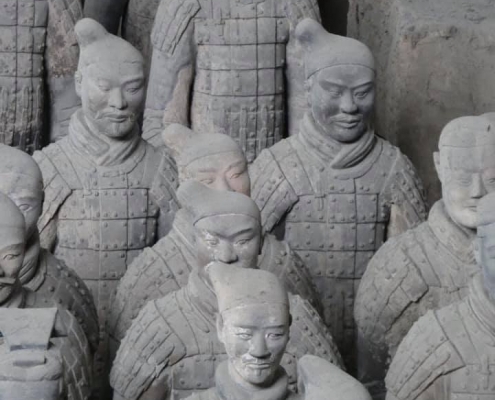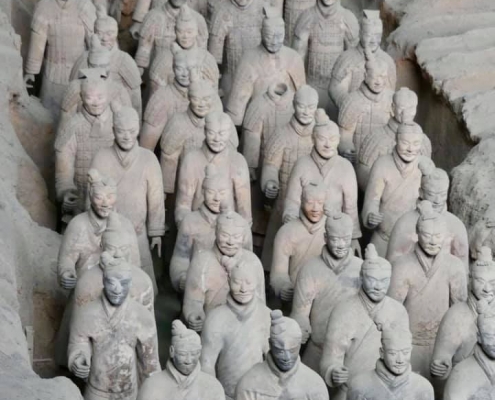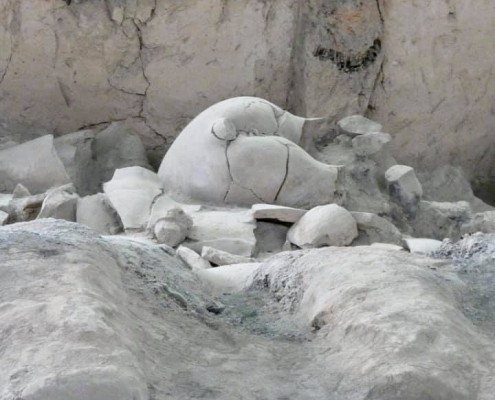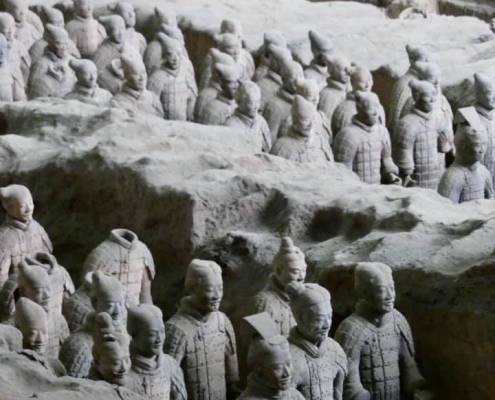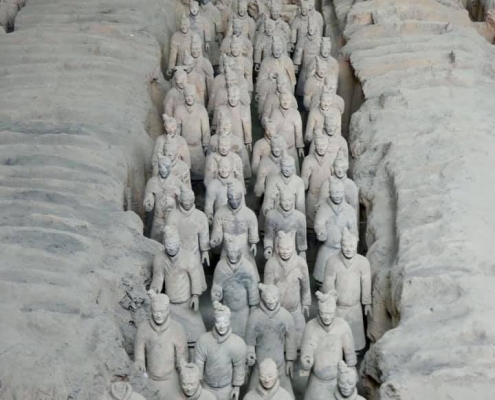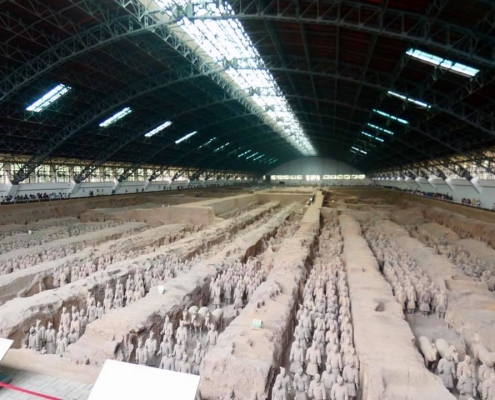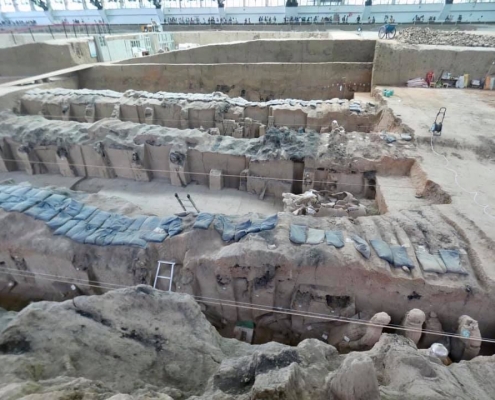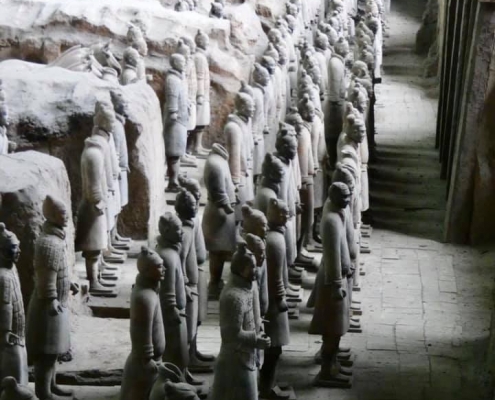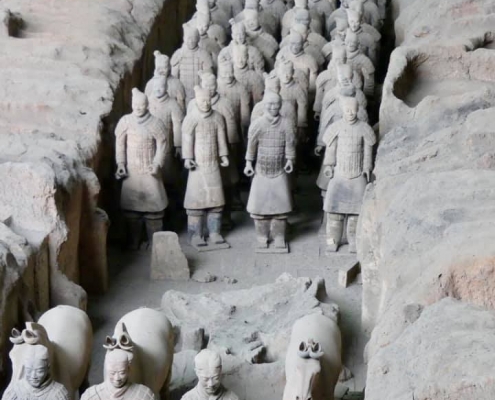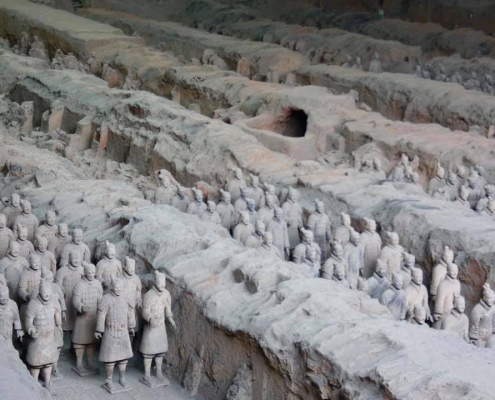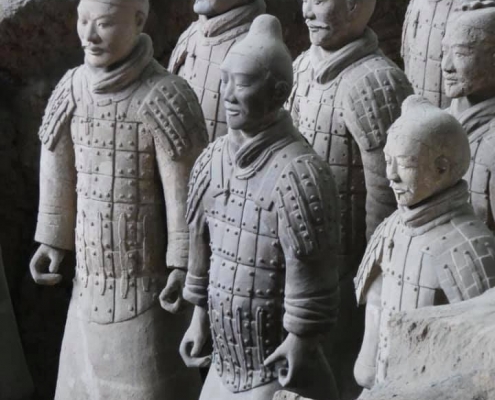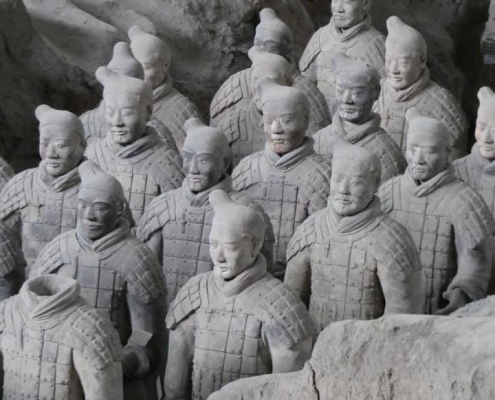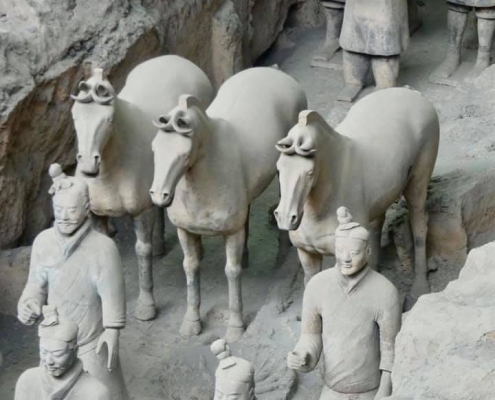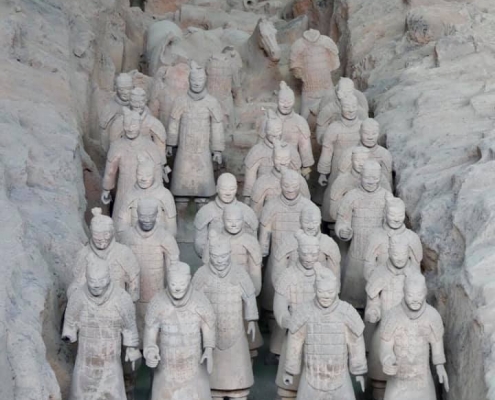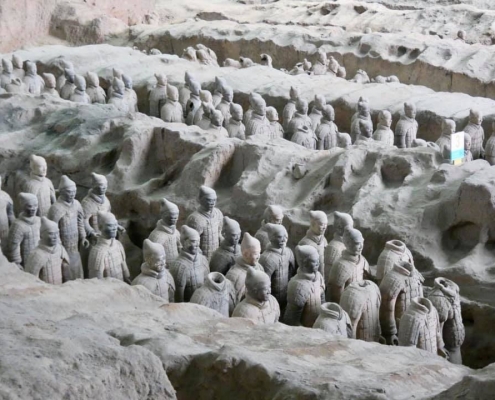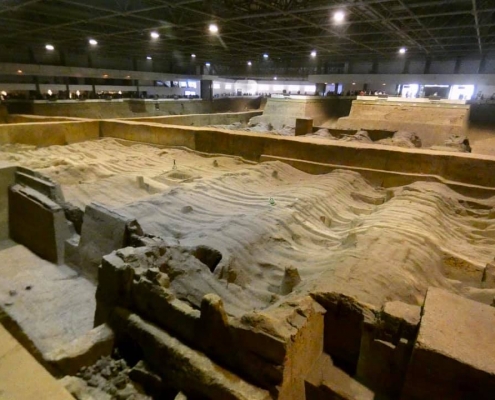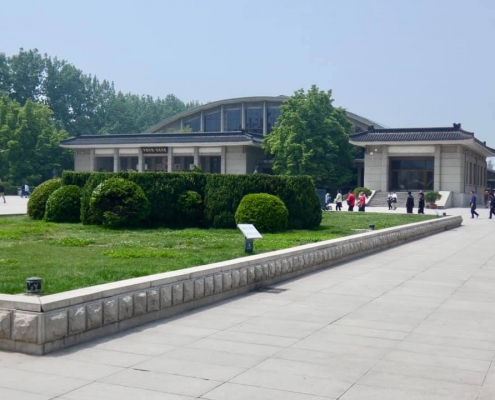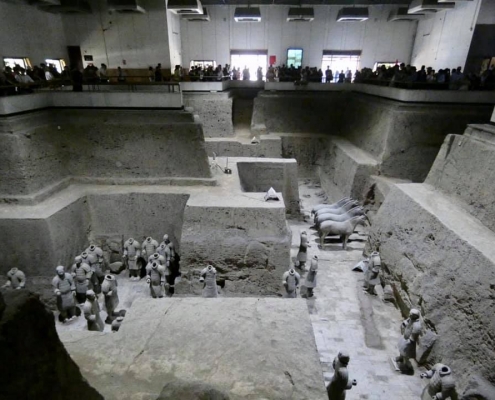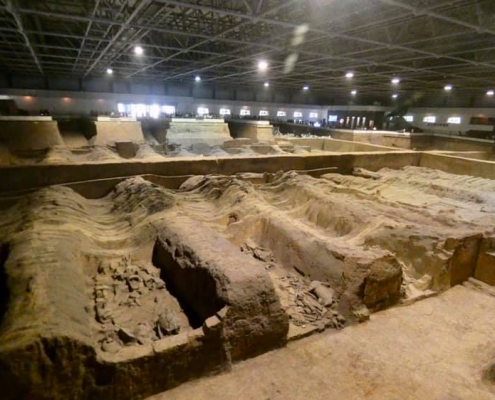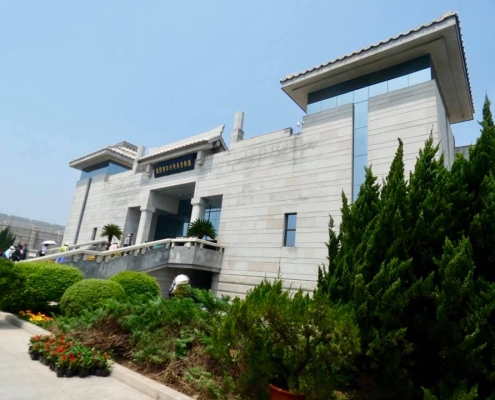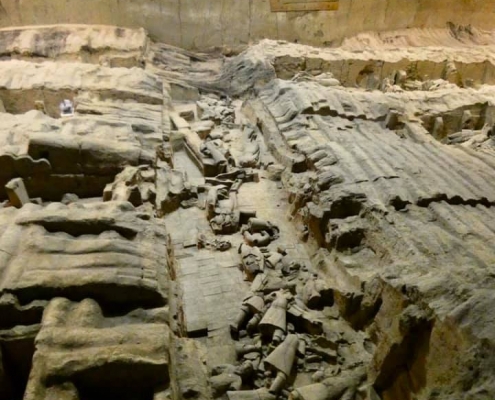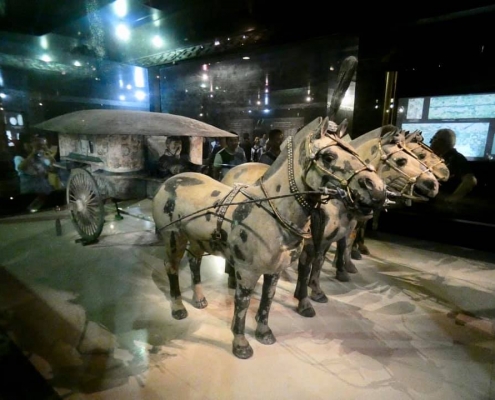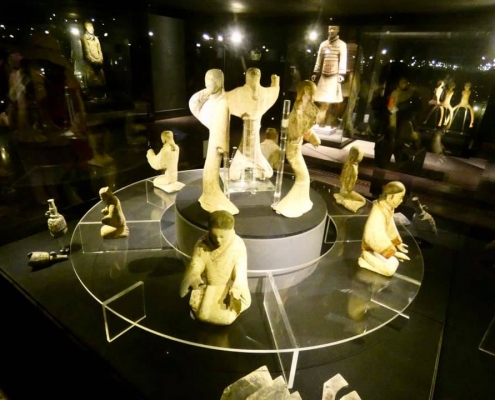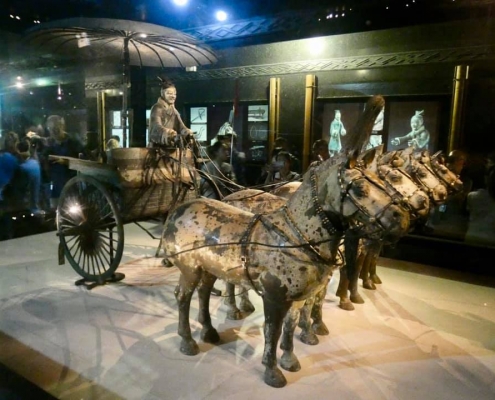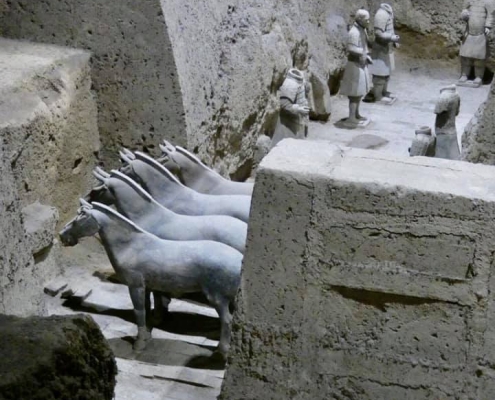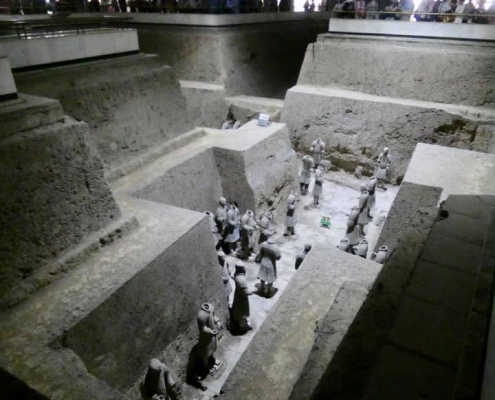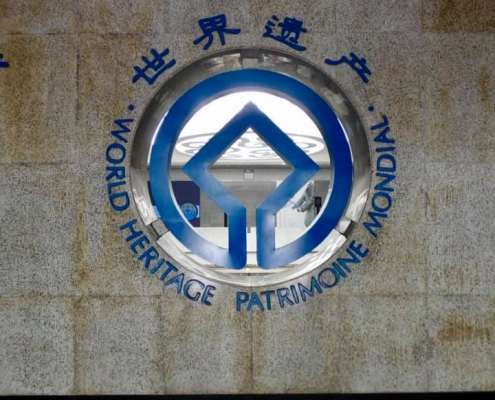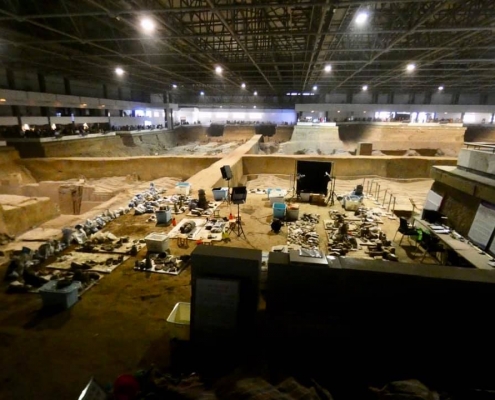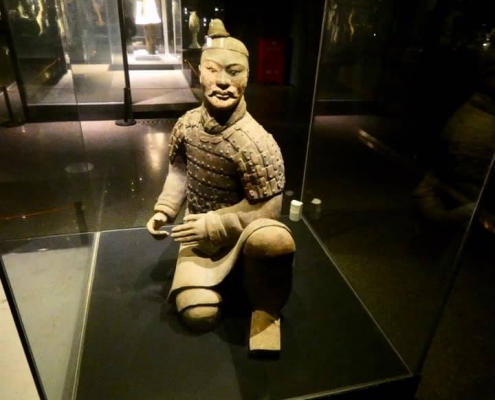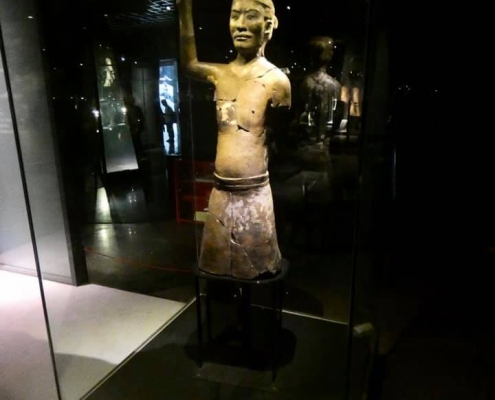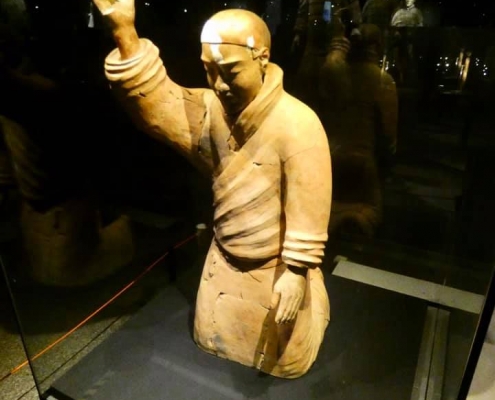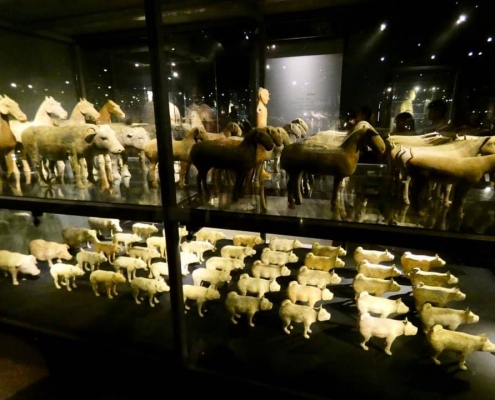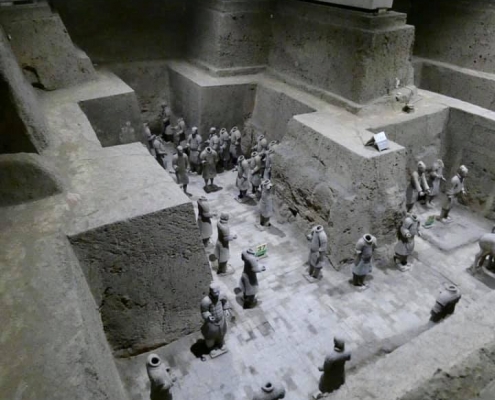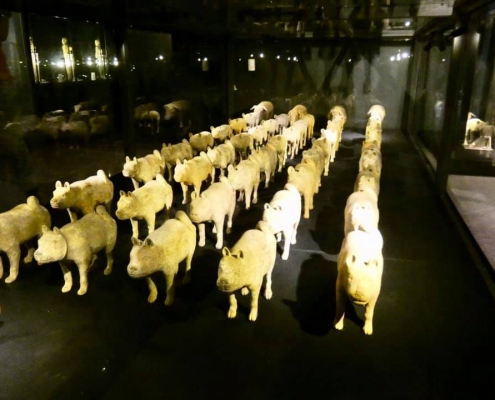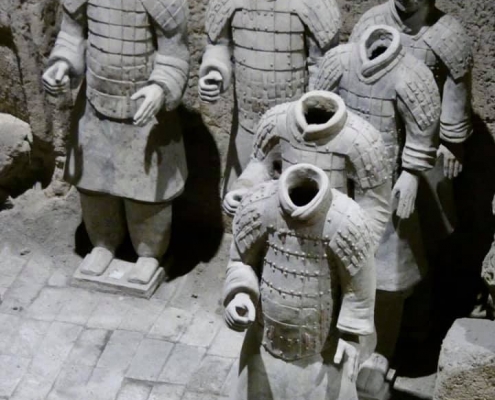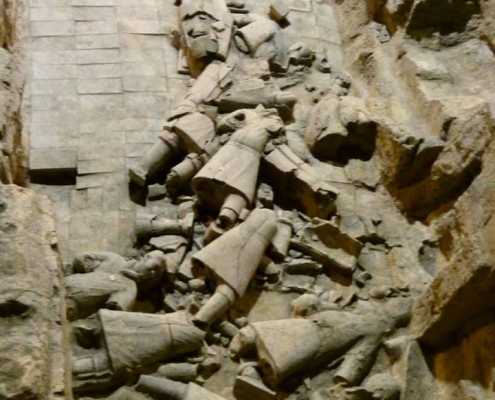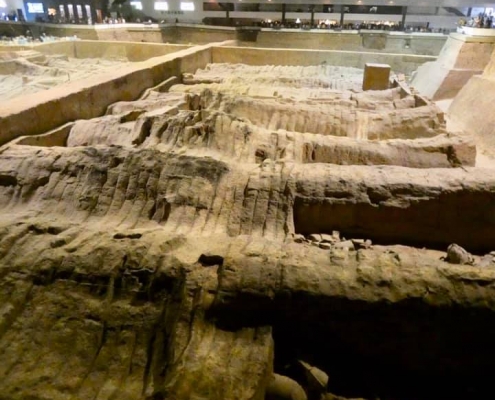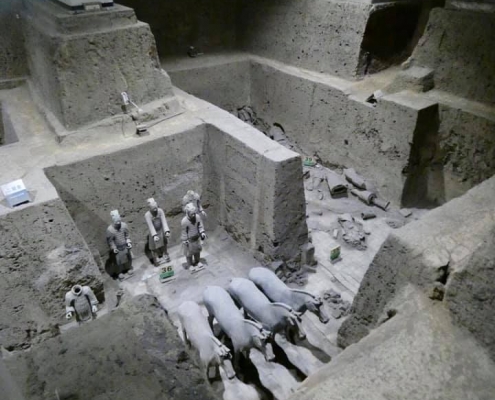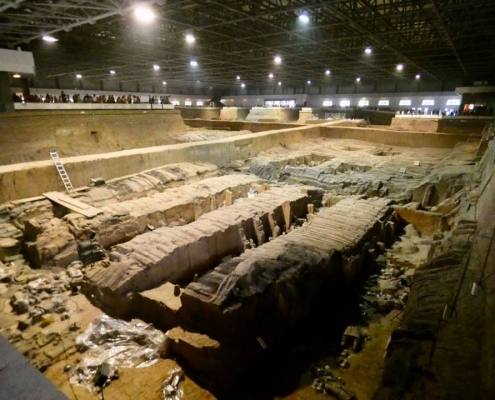China: Xi’an – Terracota Army (Mausoleum of the First Qin Emperor)
Terracotta Army aka the Mausoleum of the First Qin Emperor has been on my to-see list for a long time and I didn’t get to see it on previous trips to China. And it’s beyond fascinating! Discovered only in 1974 (by local farmers digging for a water well), today over 7000 terracotta warrior statues and horses have been excavated and restored mostly from Pit 1 (there are also two smaller pits – 2 & 3 – next posts). The terracotta army was built from 246 to 209 BC, and then buried with the Emperor in 208 BC to protect him in the afterlife. Pit 1 has then most excavated figures crowded in the front of the pit, while the excavations and assembly of broken pieces continues in the back. It’s truly a surreal site – a grey clay army frozen in time for over 2000 years marching at you! All figures are lifesize with different uniforms, faces, positions, and weapons. A walk all around the pit gives you a full coverage of all the viewpoints of the Terracotta Army, one of the most premier UNESCO World Heritage Sites. Besides the main massive pit 1, there are two other excavation pits that were discovered later in 1975 and 1976. While Pit 1 (previous post) contained the main army of 6000 warriors, the other two pits had more specialized forces – Pit 2 was for military guard consisting of cavalry and chariots and some infantry units, while Pit 3 was the command unit in chariots. Both pits have excavation ongoing. Finally, next to the pit buildings is a separate museum housing some of the best preserved and priceless pieces – the world-famous and often depicted in media chariots as well as individual warriors in various military gear. Interestingly, it appears the warriors used to be all brightly painted with different colors to make them lilfelike, but paints mostly faded after 2000 years.

